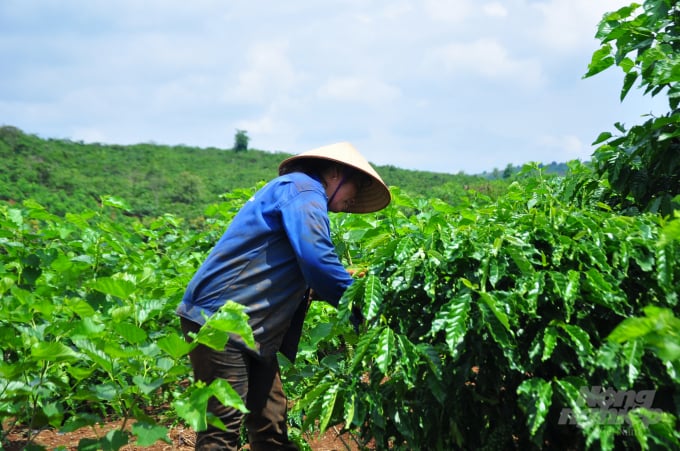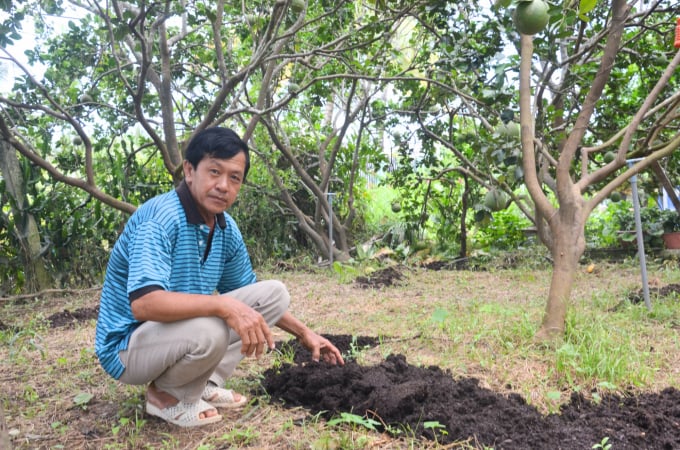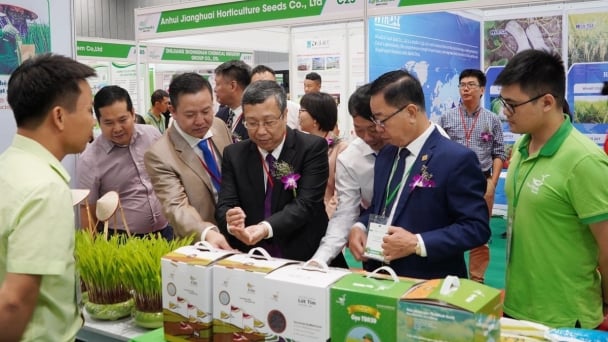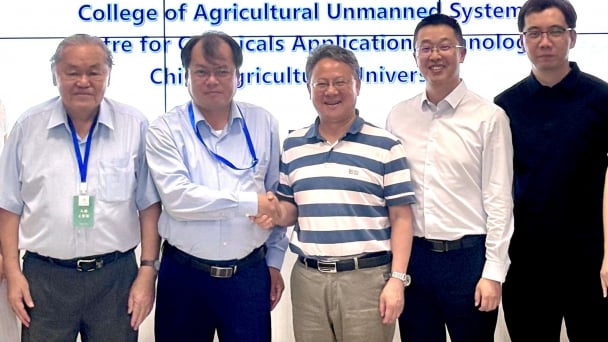June 26, 2025 | 18:50 GMT +7
June 26, 2025 | 18:50 GMT +7
Hotline: 0913.378.918
June 26, 2025 | 18:50 GMT +7
Hotline: 0913.378.918

Growers have an excess of by-products but a shortage of organic fertilizers. Photo: TL.
To avoid waste of livestock waste, it is necessary to have a close combination of fields in agriculture and government policies to promote reuse activities, thereby achieving efficiency in pollution reduction, meeting organic agriculture, agriculture in the direction of a circular economy, and moving towards sustainable agriculture.
According to Associate Professor Ph.D. Mai Van Trinh, Director of the Institute of Agricultural Environment (2021), every year the biomass agricultural by-products and waste from main crops such as rice, corn, sugarcane, vegetables of all kinds can provide the equivalent of about 43.4 million tonnes of organic, 1.86 million tonnes of urea, 1.68 million tons of single superphosphate and 2.23 million tons of potassium sulfate.
Similarly, with the volume and characteristics of each type of livestock solid waste, the results show that the annual amount of livestock waste can provide an amount equivalent to about 42 million tonnes of pure organic, 1.2 million tonnes of urea nitrogen, 3.1 million tonnes of single superphosphate, and 2.4 million tonnes of potassium sulfate fertilizer.
These are considered huge numbers to compensate for nutrients in the soil and use them for crops in agricultural cultivation. However, these nutrients are almost wasted, and there are no incentive mechanisms for reuse.
Meanwhile, the cost of treating agricultural by-products and waste is still high compared to farmers' income, leading to the loss of a considerable amount of organic matter and plant nutrients, polluting water sources and air, while the soil is increasingly depleted of organic matter, seriously degraded.
A massive problem in the issue of livestock waste and crop by-products is that the relationship between the farm/cultivator and the farm/raiser is very loose, even non-existent.
Most livestock farms do not grow crops; Cultivation farms do not have livestock. Therefore, livestock waste is not used for cultivation, becomes redundant, must be disposed of, and pollutes the environment.
In contrast, crop residues, such as rice straw, corn cobs, cane sheaths, and leaves, etc., must not be reused, causing excess land, must be disposed of or burned, polluting the land, water, and air, and losing millions of tonnes of organic matter, nitrogen, phosphorus, potassium, and other nutrients.
Livestock waste is a resource, but livestock farms own a huge resource of millions of tons that cannot be sold, must be dumped, pollute the environment or sell at a low price to fertilizer companies.

Using organic agricultural by-products to create nutrients for plants will bring economic and environmental value. Photo: TL.
The reason is the State's regulations on planning and production conditions for organic fertilizers. In which more than 90% of the farms are not eligible. The fact that livestock farms do not take advantage of their farm's waste, only profit from the main product of livestock, but not from valuable agricultural by-products and waste, especially in difficult times due to high prices. Even if there is a downturn or a disease outbreak, that source of income will be precious in maintaining the development of the farm.
Organic fertilizers produced only from crop or livestock by-products are not of high quality but must be combined with crop by-products with livestock waste because the optimal decomposition process takes place when the compost has a high proportion of compost. optimum C/N (carbon/nitrogen) ratio.
The C/N ratio of crop residues is high (50 - 80), and livestock waste is very low (below 10). Good organic fertilizer must have a C/N ratio of 15 - 30. That is, these two types of waste must be mixed to form high-quality organic fertilizer.
Growers have an excess of agricultural by-products and waste but a shortage of organic fertilizers. Likewise, raisers have excess waste, which must be discarded. Both cause environmental pollution, while arable land is increasingly degraded, acidified, and lost productivity.
Mixed fertilizer NPK accounted for the most significant proportion (35.5%), followed by urea (22.2%), DAP (10.1%), and single phosphate fertilizer (9%). According to the organic agriculture project (Decision No. 885/QD-TTg, dated June 23, 2020, of the Prime Minister), by 2025 and 2030, the organic agricultural area should be 1.5% and 3% of the cultivated area, equivalent to 225,000 hectares and 450,000 hectares of organic farming.
Currently, only 15% of the cultivated area in the Red River Delta is fertilized with organic fertilizers. In the southern provinces, the rate is lower. To have the scale of organic agriculture as the project, these are the only two sources to produce organic fertilizers to replace inorganic fertilizers. To strive for even larger-scale agriculture, it is necessary to make enough organic fertilizer for organic farming.
In green agriculture, circular agriculture, and sustainable agriculture, all organic sources include fresh and dried livestock and poultry manure; manure, dry manure (cow manure); crop by-products; domestic organic waste; sewage sludge, biogas cellar bottom sludge, post-biogas wastewater; plants, waste starch production, slaughter, aquatic product processing. All have high nutritional value and are valuable inputs for cultivation.
The use of these organic resources in any form brings economic and environmental value. If the farm owner can process them into organic fertilizers and sell them as a commodity to increase their income (still complying with the law and ensuring their products are sold up to registered standards), then livestock waste will not cause the environment contaminated.
Translated by Ha Phuc

(VAN) Vietnam and China are strengthening connectivity and cooperation in the field of crop varieties and agricultural materials, paving the way for sustainable development in the agricultural sectors of both countries.

(VAN) Over the past 20 years, Hai Phong has reduced the number of bears in captivity from 500 to just over 10, thanks to the efforts of the forest protection force.

(VAN) Prime Minister Pham Minh Chinh held talks with Chinese Premier Li Qiang on June 24, in Tianjin, China.

(VAN) On the occasion of attending the World Economic Forum (WEF) in Tianjin, China, on the morning of June 25 (local time), Prime Minister Pham Minh Chinh met with Senegalese Prime Minister Ousmane Sonko.

(VAN) The Net Zero door is opening, but no one can walk through it if they stay outside the mandatory emissions inventory roadmap starting in 2025.

(VAN) The visit to China Agricultural University opens up new prospects for high-tech agricultural cooperation, fostering connections between research institutes and enterprises of Vietnam - China.

(VAN) Con Dao, the emerald gem in the vast ocean, is undergoing a powerful revival, transforming into one of Vietnam’s leading ‘eco-spiritual paradises.’ In this journey.